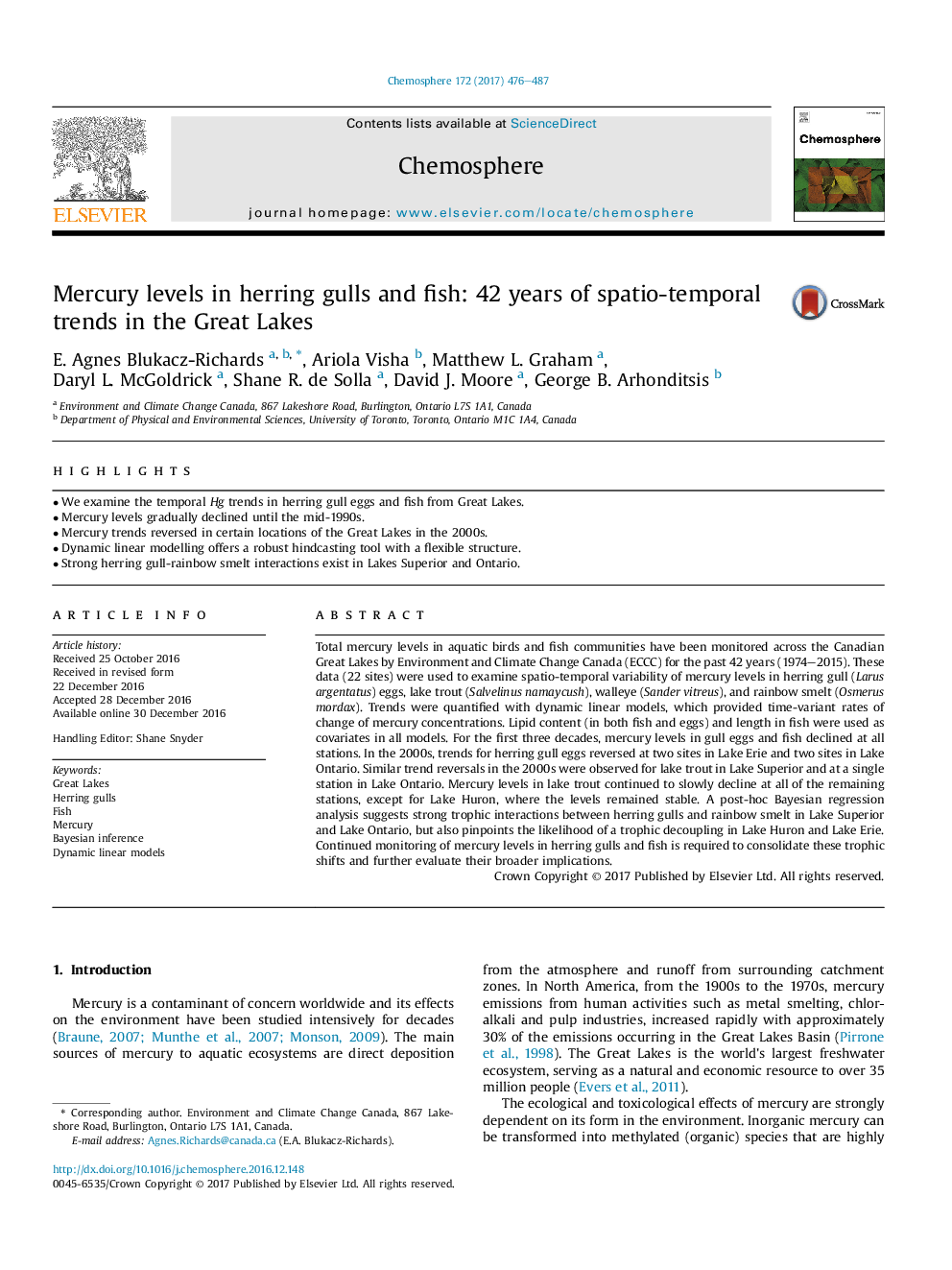| کد مقاله | کد نشریه | سال انتشار | مقاله انگلیسی | نسخه تمام متن |
|---|---|---|---|---|
| 5747088 | 1618799 | 2017 | 12 صفحه PDF | دانلود رایگان |
- We examine the temporal Hg trends in herring gull eggs and fish from Great Lakes.
- Mercury levels gradually declined until the mid-1990s.
- Mercury trends reversed in certain locations of the Great Lakes in the 2000s.
- Dynamic linear modelling offers a robust hindcasting tool with a flexible structure.
- Strong herring gull-rainbow smelt interactions exist in Lakes Superior and Ontario.
Total mercury levels in aquatic birds and fish communities have been monitored across the Canadian Great Lakes by Environment and Climate Change Canada (ECCC) for the past 42 years (1974-2015). These data (22 sites) were used to examine spatio-temporal variability of mercury levels in herring gull (Larus argentatus) eggs, lake trout (Salvelinus namaycush), walleye (Sander vitreus), and rainbow smelt (Osmerus mordax). Trends were quantified with dynamic linear models, which provided time-variant rates of change of mercury concentrations. Lipid content (in both fish and eggs) and length in fish were used as covariates in all models. For the first three decades, mercury levels in gull eggs and fish declined at all stations. In the 2000s, trends for herring gull eggs reversed at two sites in Lake Erie and two sites in Lake Ontario. Similar trend reversals in the 2000s were observed for lake trout in Lake Superior and at a single station in Lake Ontario. Mercury levels in lake trout continued to slowly decline at all of the remaining stations, except for Lake Huron, where the levels remained stable. A post-hoc Bayesian regression analysis suggests strong trophic interactions between herring gulls and rainbow smelt in Lake Superior and Lake Ontario, but also pinpoints the likelihood of a trophic decoupling in Lake Huron and Lake Erie. Continued monitoring of mercury levels in herring gulls and fish is required to consolidate these trophic shifts and further evaluate their broader implications.
Journal: Chemosphere - Volume 172, April 2017, Pages 476-487
